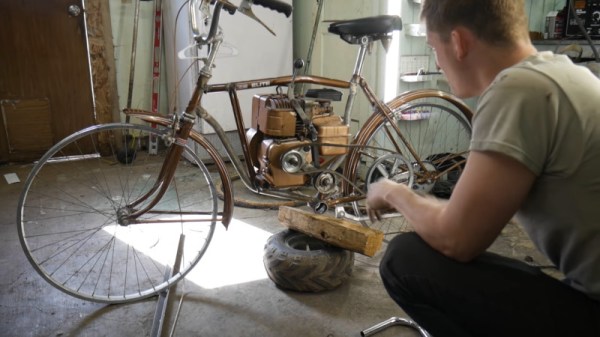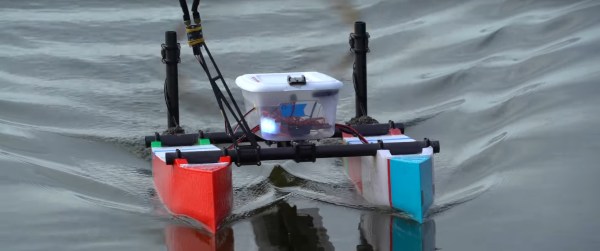eBay made the process of motorizing a bicycle popular, with cheap engines from China combined with a handful of parts to lace everything together. If your tastes are a little more vintage however, [Oliver]’s build might be more your speed.
Starting with a real Briggs and Stratton liberated from an old rotary tiller, this engine has legitimate vintage credentials. Looking resplendent in brown, it’s paired with a bike in a similar shade from yesteryear. Drive from the engine is transferred by belt to a jackshaft, which then sends power through a chain to the rear wheel. The belt tensioner serves as a rudimentary clutch, allowing the engine to be disconnected from the drivetrain when disengaged.
The retro components, combined with an appropriate color scheme, make this a wonderful cruiser that oozes style. While it’s probably not suited for downtown commuting due to its lack of a real clutch and noise, it would make a great ride for taking in some country roads on a sunny day. We’ve seen similarly styled e-bikes, too. Video after the break.
Continue reading “Vintage Bike Gets Briggs And Stratton Power”





















